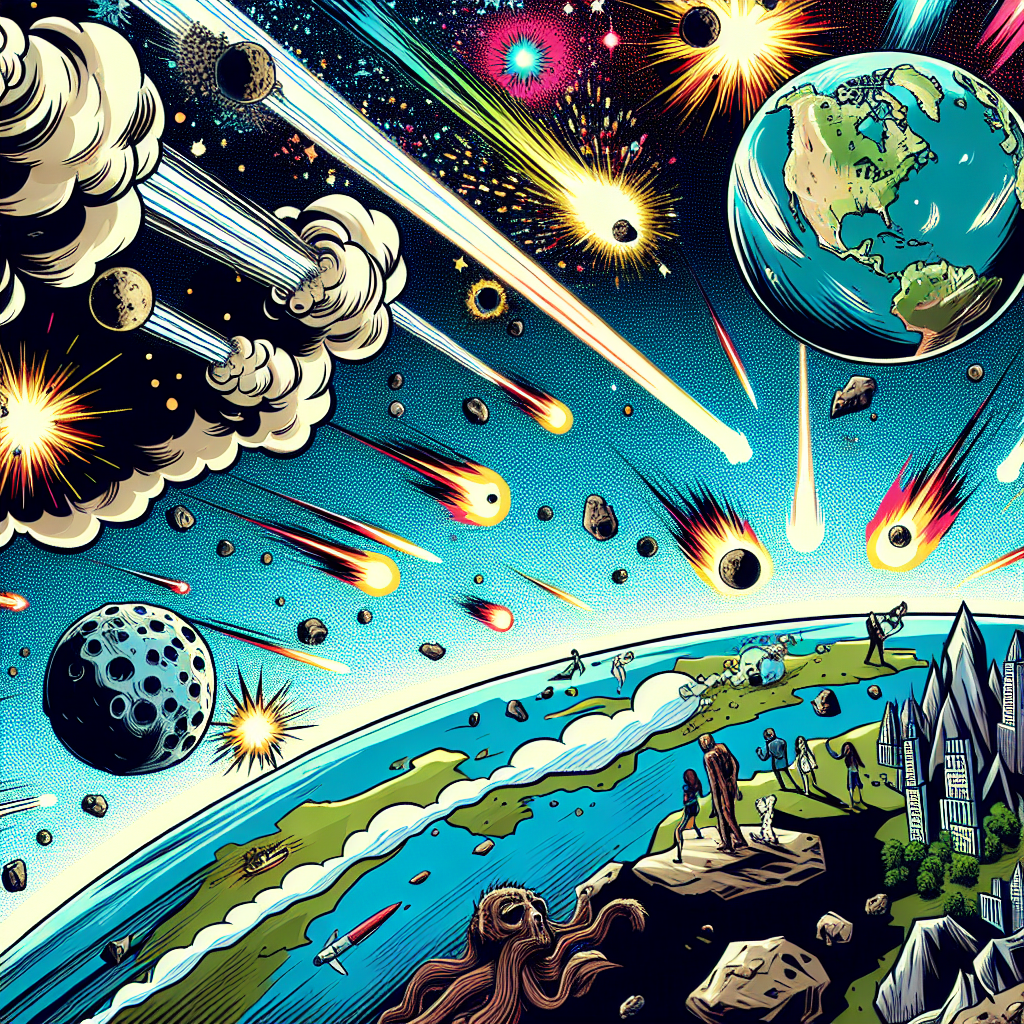Earth colliding with another planet is an intriguing concept. Imagine two massive celestial bodies, each with its own gravity, velocity, and composition, hurtling towards each other. The consequences would be catastrophic.
First, let's consider the scale of this event. Earth's mass is approximately 5.97 x 10^24 kilograms. If we were to collide with a planet of similar size, like Mars, the combined mass would be staggering. To put it into perspective, imagine taking every car on Earth, from toy cars to SUVs, and piling them on top of each other – the resulting stack would still be insignificant compared to the mass of these two planets.
Now, when two objects collide, their kinetic energy is converted into other forms, such as thermal energy, sound waves, and mechanical stress. In this scenario, the energy released would be unfathomable. Imagine the energy equivalent of detonating billions of atomic bombs simultaneously. The heat generated would vaporize massive amounts of rock and dust, creating an enormous cloud that would envelop both planets.
The collision would also create an immense shockwave, propagating through the Earth's interior and causing the planet's crust to shatter like a brittle glass. This would unleash a torrent of earthquakes, volcanic eruptions, and tsunamis, rendering the surface uninhabitable.
Furthermore, the gravitational disruption would be catastrophic. As the two planets converge, their gravitational fields would interfere, causing chaotic perturbations in the Earth's orbit. This would lead to extreme climate fluctuations, making the planet's surface hostile to life as we know it.
Let's examine the possibilities of planetary fragments and debris:
- Debris ejection: The collision would expel massive amounts of rock and dust into space, creating a ring system around the resulting merged planet. This debris would eventually coalesce, forming new moons or even small planets.
- Planetary fragments: The force of the collision would shatter both planets, sending massive fragments into orbit. These fragments could potentially coalesce to form a new, smaller planet.
- Atmospheric loss: The immense heat generated during the collision would strip away a significant portion of the Earth's atmosphere, leaving the surface exposed to harsh solar and cosmic radiation.
In the aftermath, the merged planet would likely be a hot, hostile world, with a surface temperature exceeding thousands of degrees Celsius. The extreme conditions would make it difficult for life as we know it to exist.
In the unlikely event that life somehow managed to persist, it would likely be in the form of extremophiles, capable of surviving in environments with temperatures above 100°C (212°F). However, these organisms would be vastly different from the diverse range of species we see today.
The timescale for the Earth to recover from such a catastrophic event would be measured in millions, if not billions, of years. During this period, the planet would undergo significant geological and atmospheric changes, slowly paving the way for the emergence of new life forms.
In conclusion, a collision between Earth and another planet would be an event of unimaginable proportions, reshaping the very fabric of our planet and its potential for life.

Popular Space Questions
Find answers to the trending space questions being asked by our community on social media.
- How many galaxies are there in the universe?
- What would happen if a pulsar's beam hit Earth?
- How far is Pluto from Earth?
- How many planets are in the Milky Way?
- How many planets are in our solar system?
- What would happen if a cosmic string passed through Earth?
- How big is the Earth?
- What are the planets in order?
- What if we could create a Dyson sphere around the sun?
- What if we found a way to manipulate gravity?